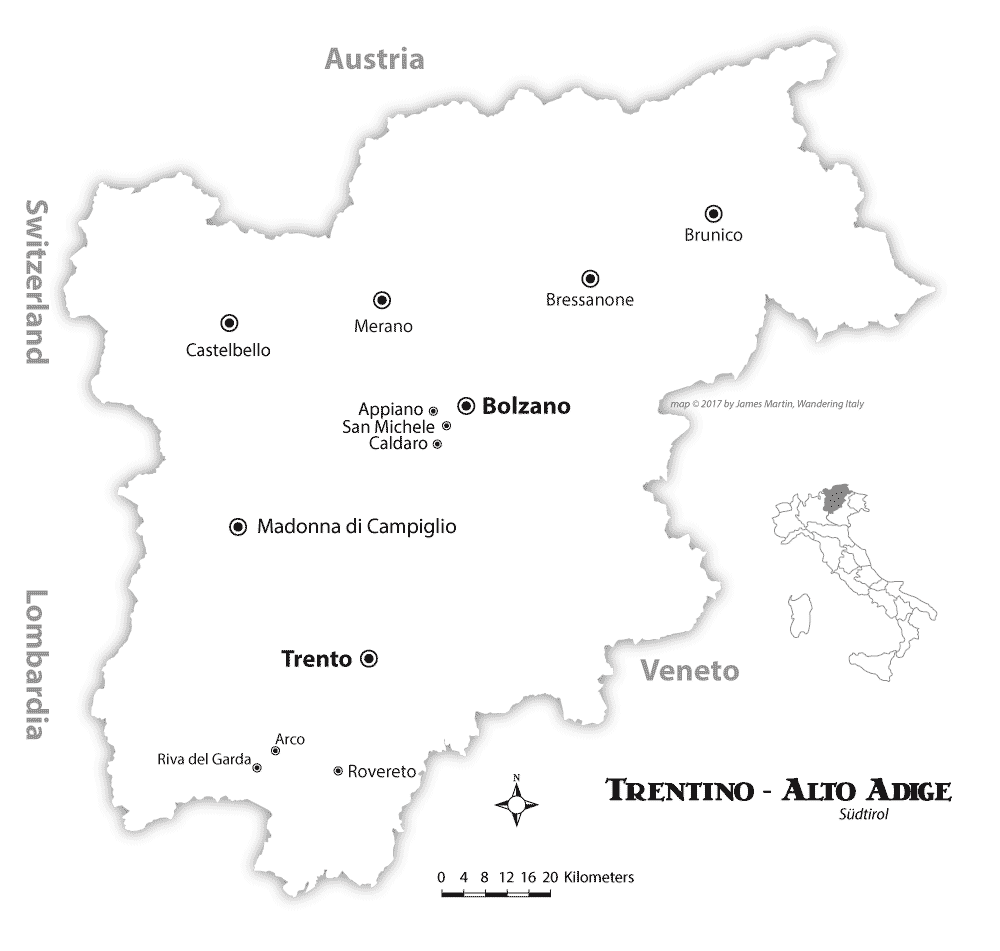
Spring in Northern Itaiy. That seemed like a no-brainer, so we left with my Alumni Group on a trip to Trentino, Italy. It was only for a week, but could have been much longer. Our base town was Trento.
Trentino-Alto Adige is Italy’s northernmost region. It consists of two self-governing provinces, Trentino in the south and Südtirol, in the north. The area borders both Austria and Switzerland. South Tyrol is mountainous and covered by forests. Trentino is an autonomous region that has been disputed among European powers. It was under Austrian rule for centuries before WWI when it was annexed by Italy: Hence the combination of Austrian food, dress, culture, and language. The town got its name from the three mountains that suround the city: Tridentum in Latin. It also refers to the trident of Neptune. After the lecture, we began a walking tour starting at the magnificent Trento lies in a wide glacial valley, known as the Adige Valley, just south of the Dolomite Mountains where the Fersina River and Avisio River join the Adige River (the second longest river in Italy).
Trento is the home of the Rhaetian people who are descended from ancient alpine tribes. Trentino is an autonomous region that has been disputed among European powers. It was under Austrian rule for centuries before WWI when it was annexed by Italy: Hence the combination of Austrian food, dress, culture, and language is evident everywhere. The town got its name from the three mountains that surround the city: Tridentum in Latin.
Our hotel in Trento was the Grand Tento Hotel. It was a great spot for seeing the town and area. It had a lovely seating area on the roof where we could spend our free time looking at the beautiful views around, reading, and journaling.
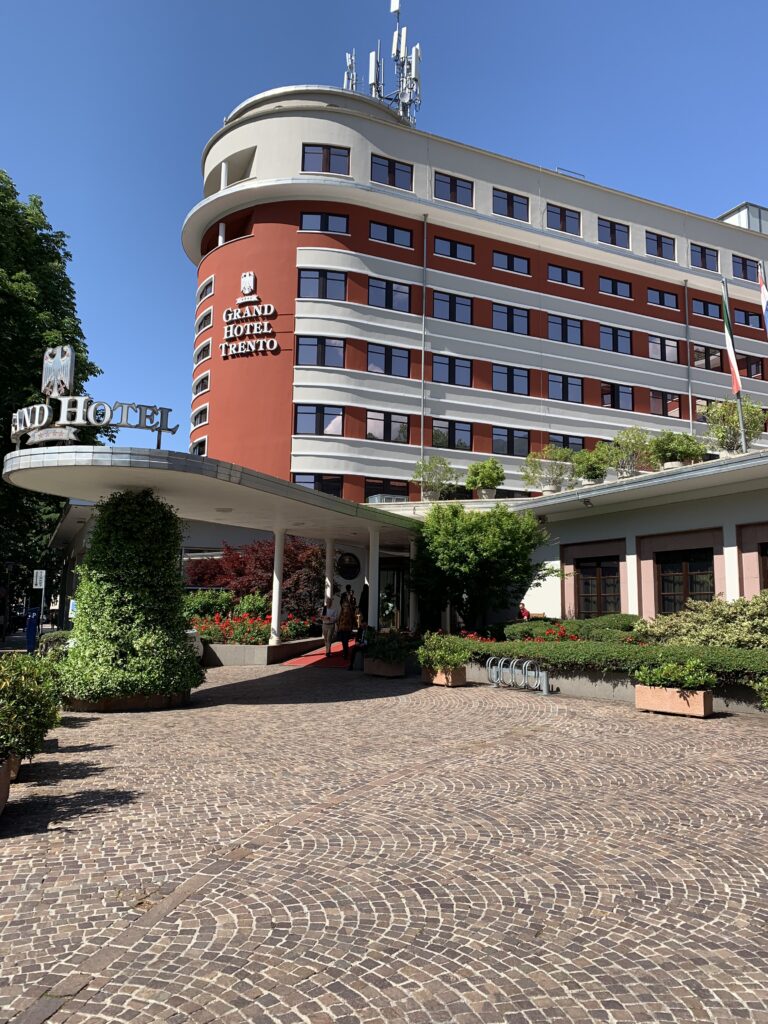
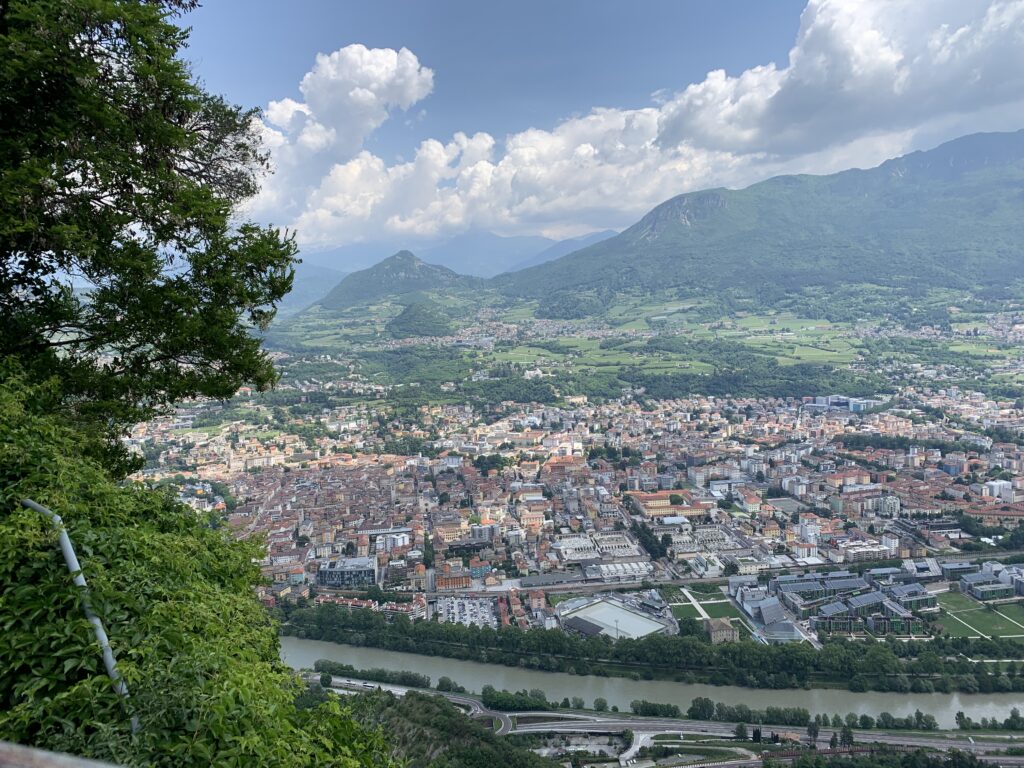
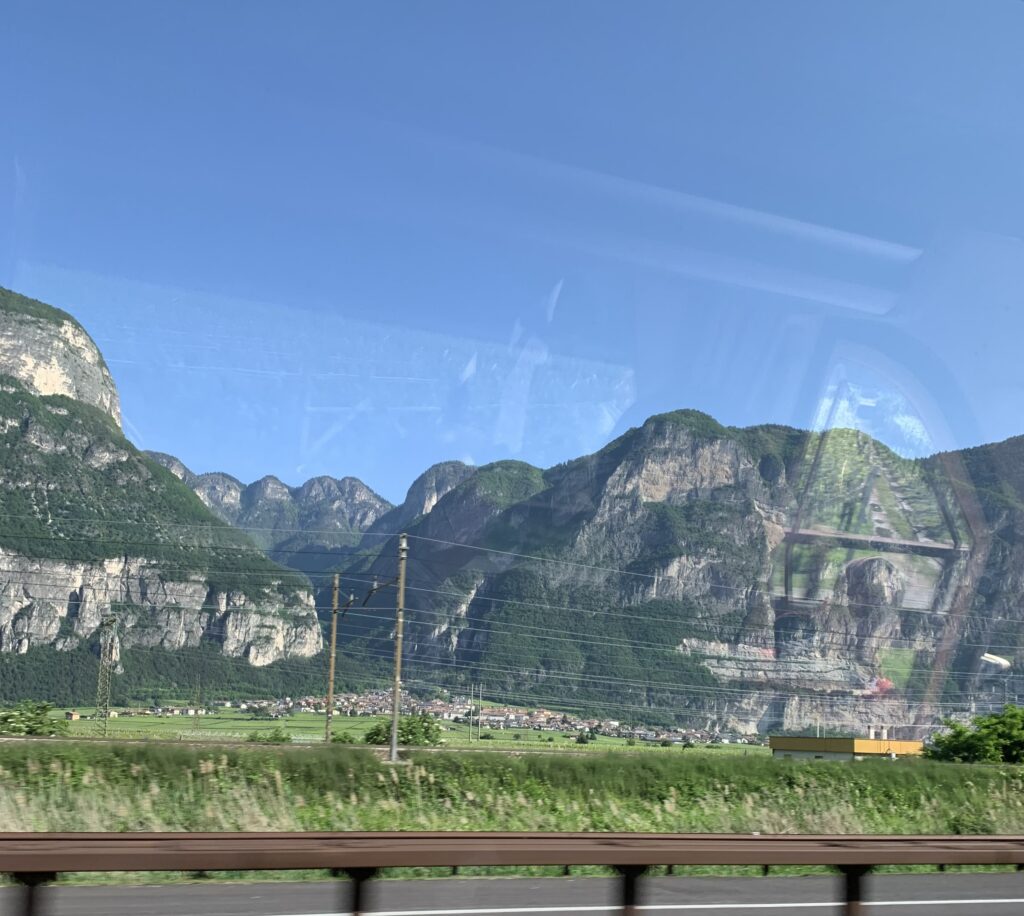
Across from the hotel is the Giardini Publica with Dante Square. The piazza is located between Trento’s main train station and Trento Grand Hotel, which was where we stayed. Sitting in one of the benches is what to do in Trento if you are after some relaxation.
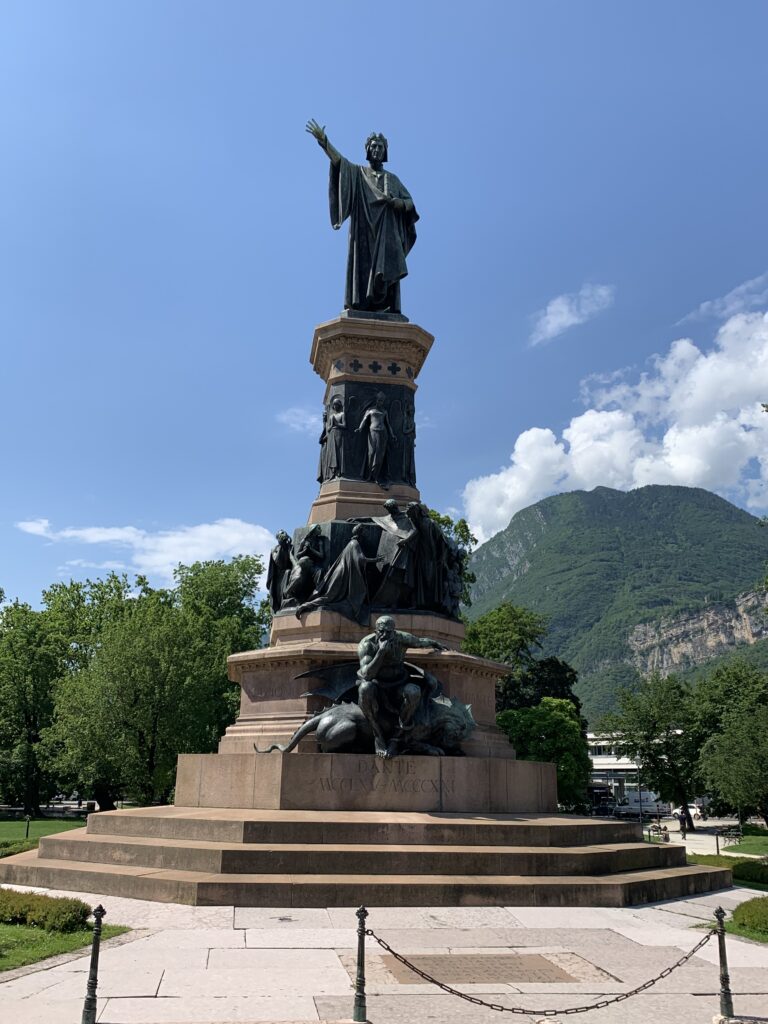
The monument was built at the end of the 19th century as a symbol for the Italian culture of Trentino, which at that time still belonged to Austria-Hungary. The sculptor was Cesare Zocchi from Florence. The base of the statue depicts the three sections of Dante’s Divine Comedy.
In the lower area the, Inferno of the Divine Comedy is shown with Minos sitting on a dragon.
In the middle area is the purification mountain, the Purgatorio. Dante and Virgil are portrayed as they encounter the souls of penitent people: the haughty ones, who can be recognized by the boulders that they carry on their shoulders, the envious, the negligent, sitting and waiting. Two souls have already repented and are about to reach paradise.
In the third area, Paradiso, there is paradise with Beatrice, her arms open, and the angels.
Above it stands the statue depicting Dante walking forward.
In his left hand he holds a book (probably the
Divine Comedy) while his right arm is stretched out, as if he wanted to “protect souls and animate his sons”, as the sculptor says.
Castello del Buonconsiglio, On a rocky hill in the heart of the town of towers the mighty Buonconsiglio Castle, the most important secular example of architecture in all Trentino. The majestic castle dates from the years 1239-1255 and served as the see of the prince bishops of Trento until 1802.
The castle includes several buildings of different eras and is surrounded by a mighty 16th century wall. Behind the wall, lies a beautiful Italian park. In 1973 the castle became the Museum of Art, housing numerous art collections. One is a magnificent Cycle of the Months fresco inside the Torre dell’ Aquila (The Eagle Tower). It was painted about 1400 and portrays a month to month look at court and rural life.
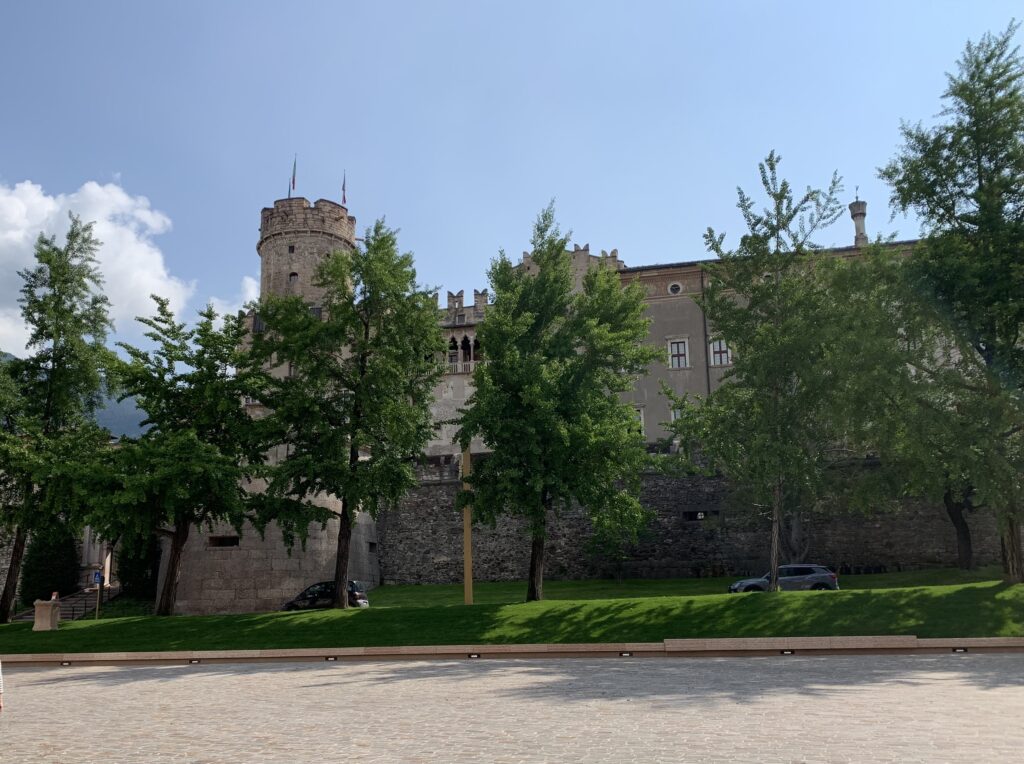
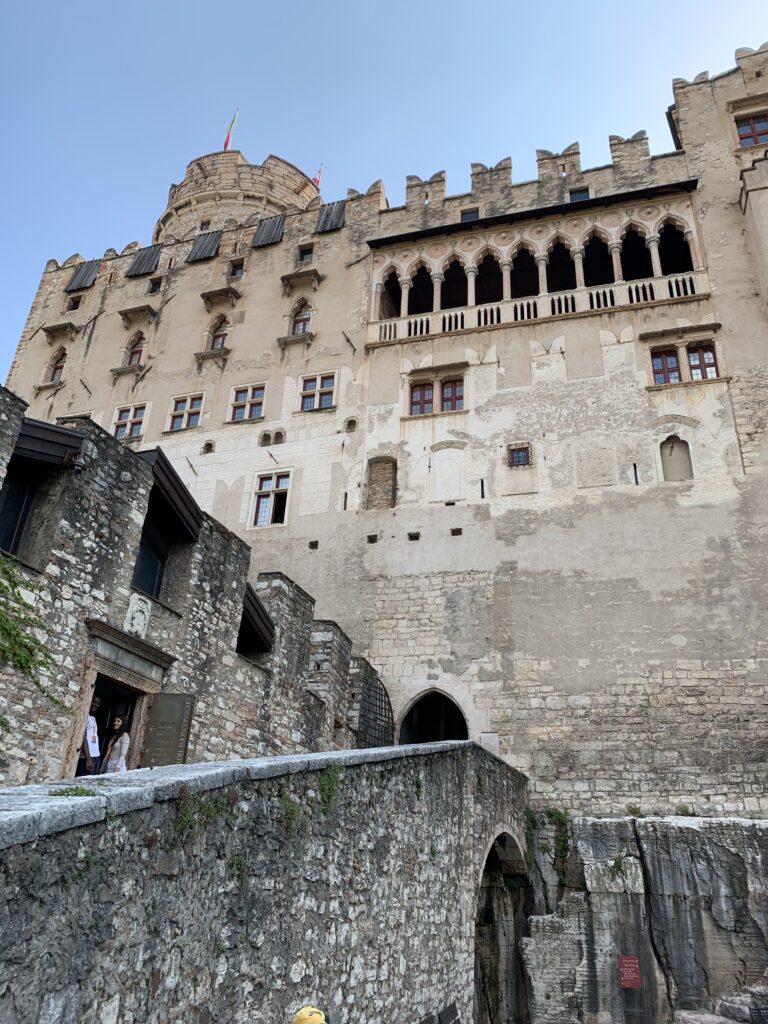
Next we went to the Cathedral, built in the 11th century on the remains of a sixth century Basilica. The Cathedral of Saint-Vigilius has both Romanesqueand Gothic elements. The rose window dominates the facade; the presence of only one tower and the lions supporting the columns on the north side are interesting features. Inside there are 14th century frescoes, the relic of the three martyrs that inspired the building of the first church in this location, and several other interesting religious artifacts.
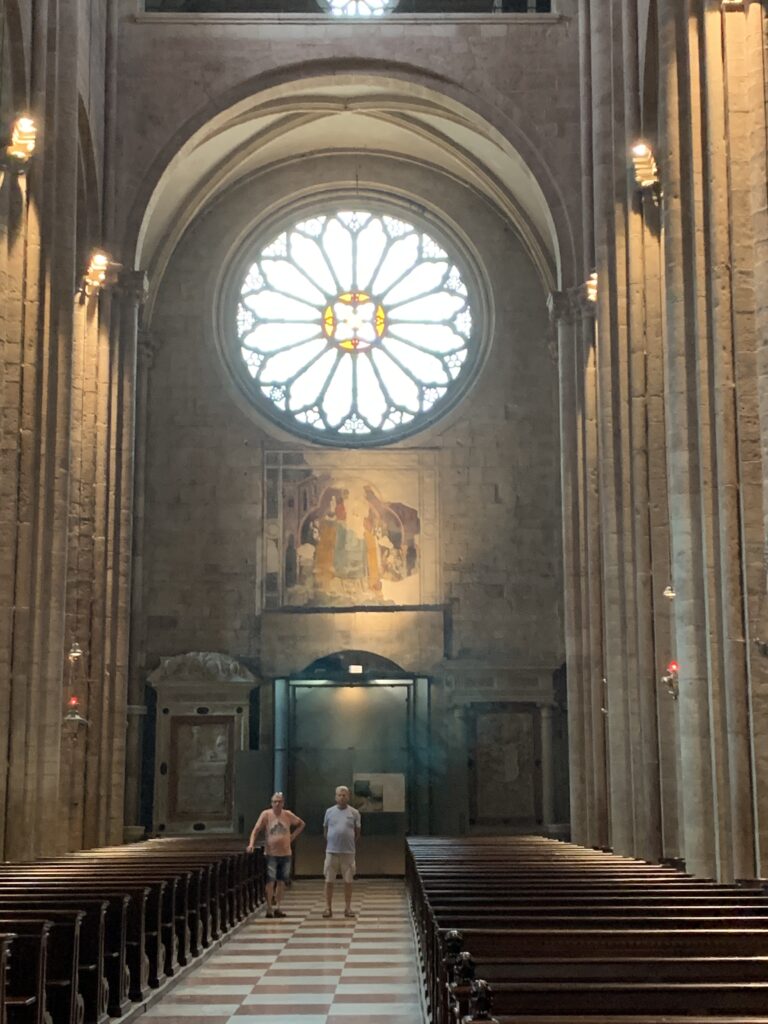

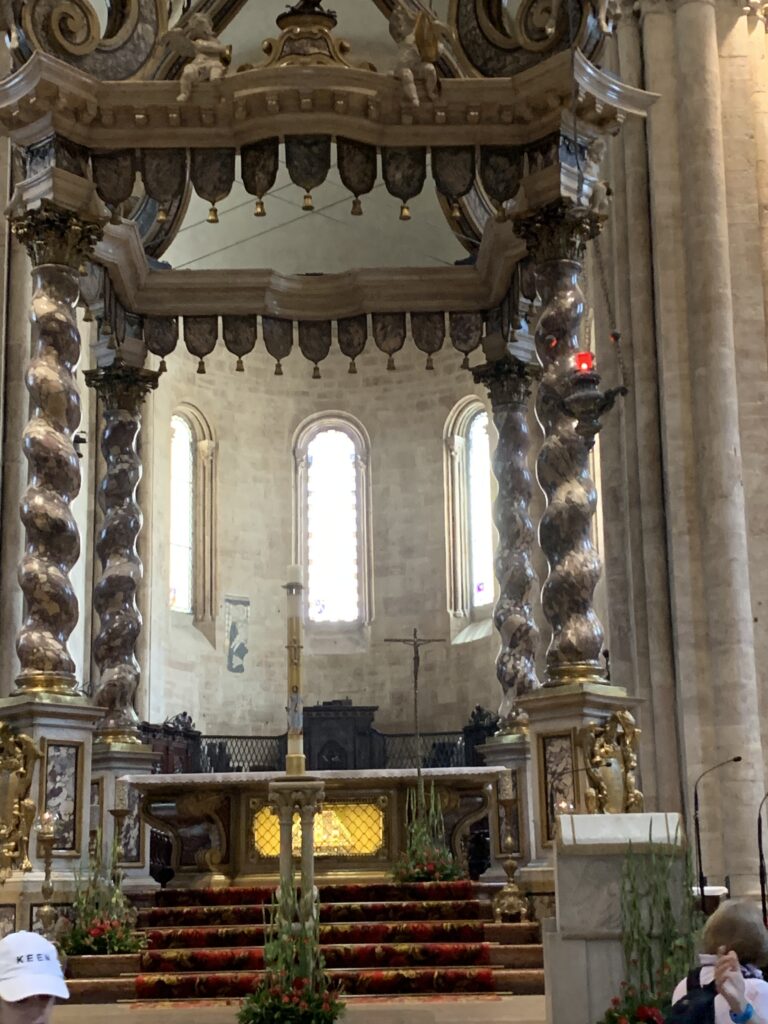
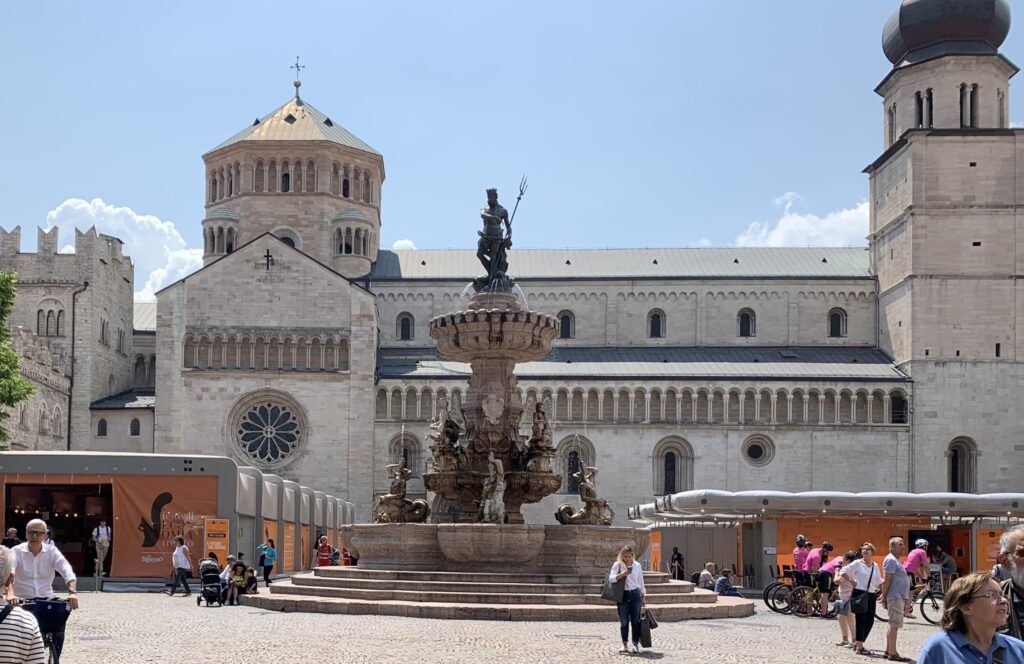
On the Plaza around the Cathedral, you see many buildings of gothic and renaissance eras. The square from the middle-ages onwards became home to the civic and religious administration of the city, although before 1000 C.E. it was an area beyond the city’s walls. In the corner of the square are two magnificent 16th Century houses, with wonderful frescoes attributed to the Italian painter Marcello Fogolino, who arrived as a fugitive in Trento in 1526. Beside the cathedral you’ll see the castle-like building of the Palazzo Pretorio, built in 1220 by Federico Vanga and once the residence of the city’s Bishop-Princes, and the seat of the city’s administration and tribunal. In the heart of the piazza is the famous Fontana del Nettuno (Neptune’s Fountain), originally sculpted by the Northern Italian artist Stefano Salterio in 1768.


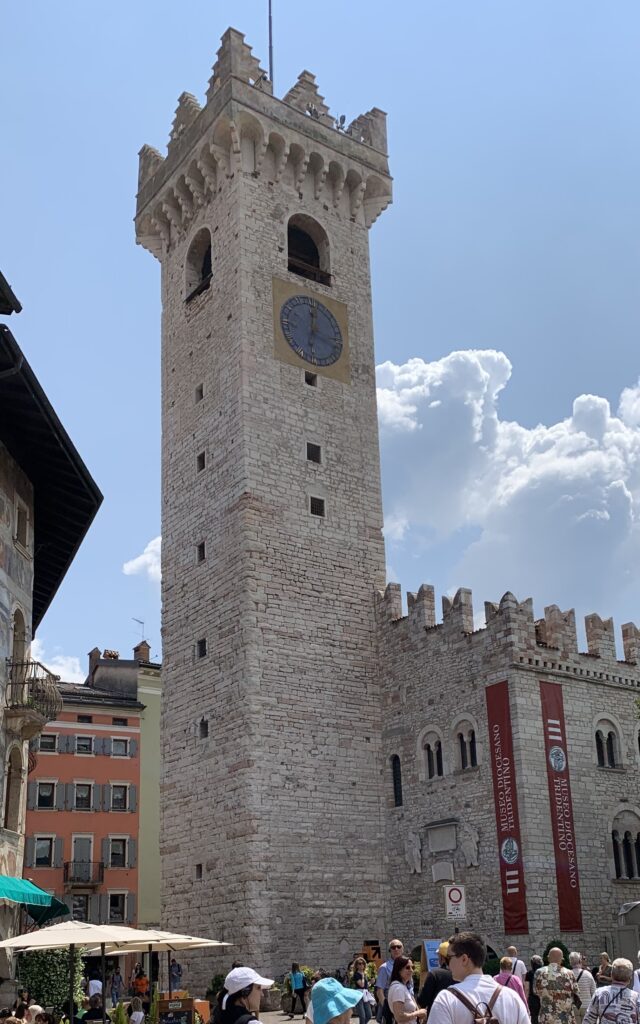
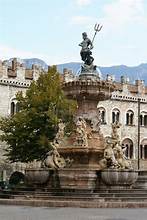

Typical on doors of houses was what looks like a formula like this: 20+G-M-B+22. It is the first two digits of the year, + 3 Magi (Caspar, Melchior, Balthazar) + (a cross) and last 2 digits of the year. (Christus, Mansionem, Benedict or May Christ Bless this House).
Finally, a cable car up the mountain overlooking the town gave a great view of Trento and the surrounding area.

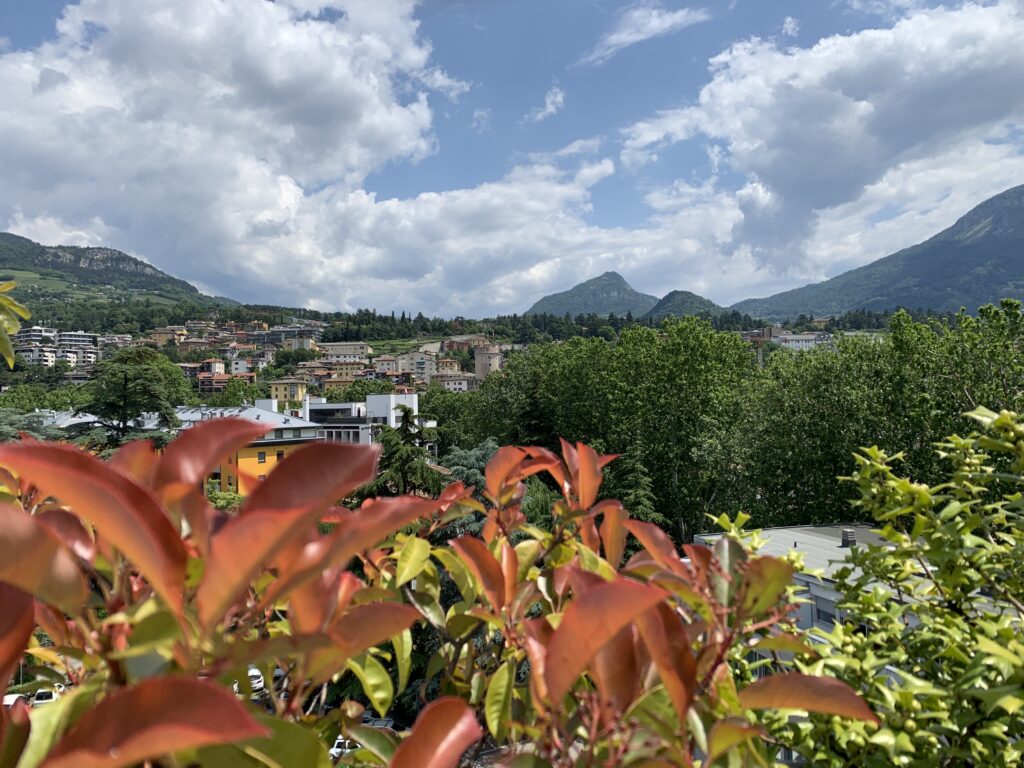

Our last day in Trento, we explored a 2,000 year old Archaeological site. The Sass Underground Archaeological Space, in Piazza Cesare Battisti, in the heart of Trento is the symbolic location of Tridentum, an ancient Roman city. Two thousand years of history can be found in the 1,700 m² of Roman ruins discovered during the excavation carried out to refurbish and expand the Social Theatre on the plaza. There are public and private spaces and buildings; a long stretch of the eastern city walls; a lengthy section of paved road,; fragments of houses with the remains of mosaics, courtyards, and artisan workshops. It was tricky finding the entrance to the underground city but well worth the effort and time.

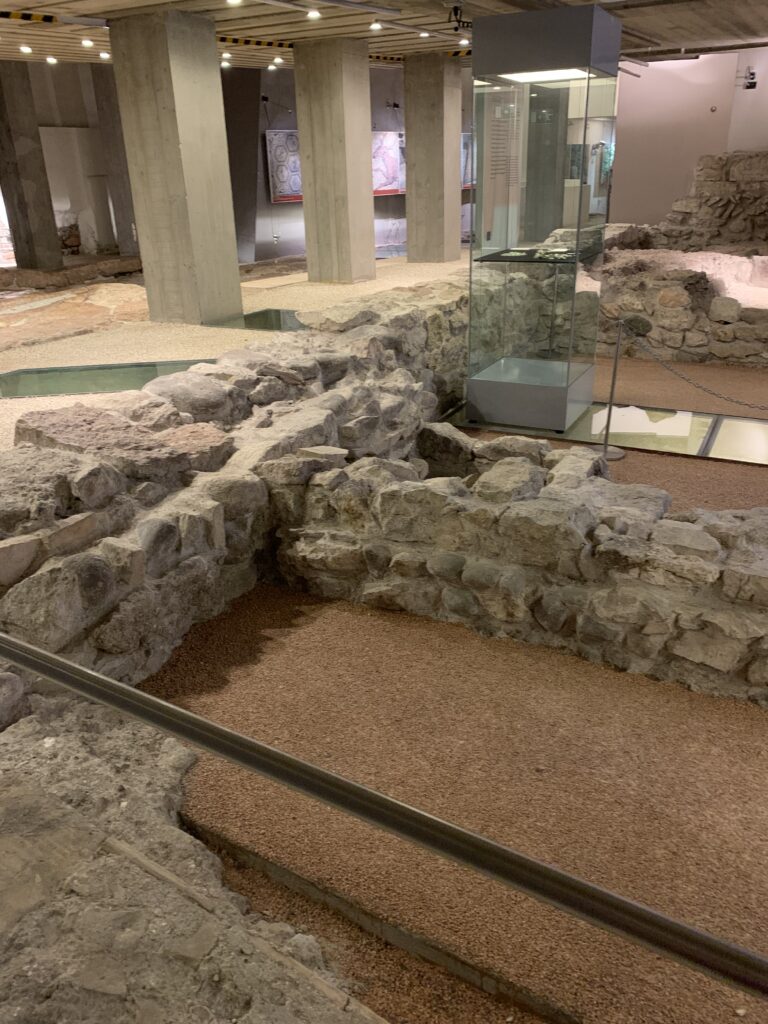
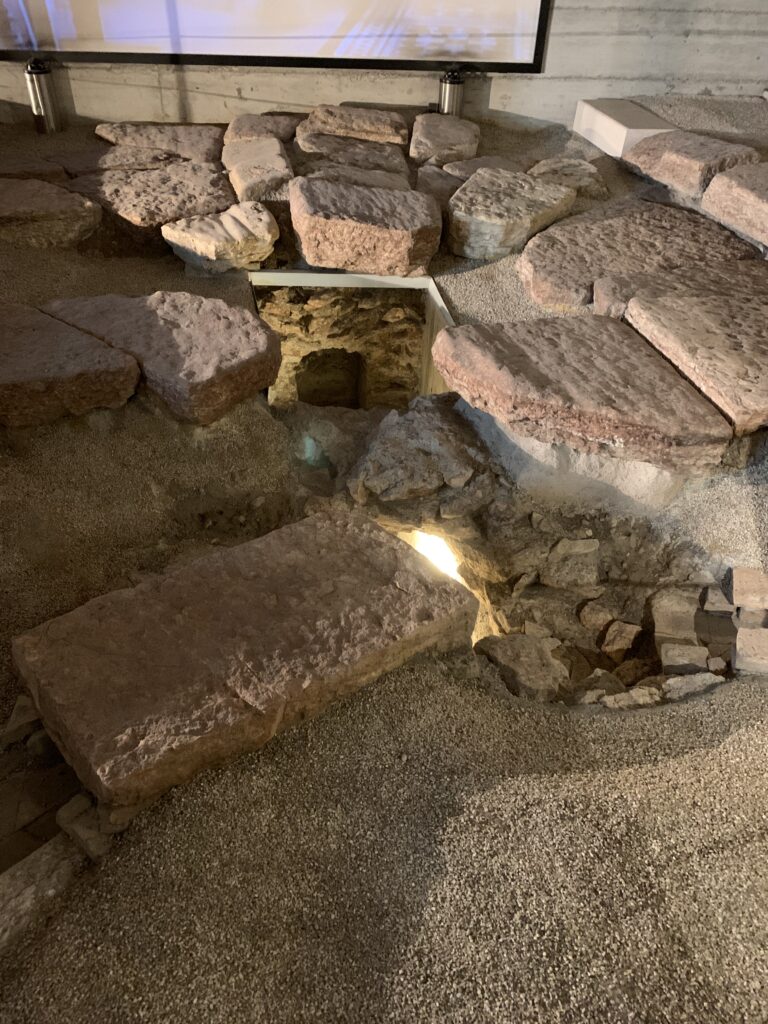
Leave a Reply